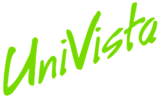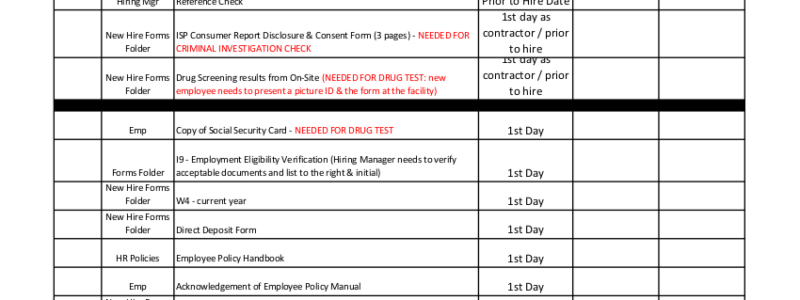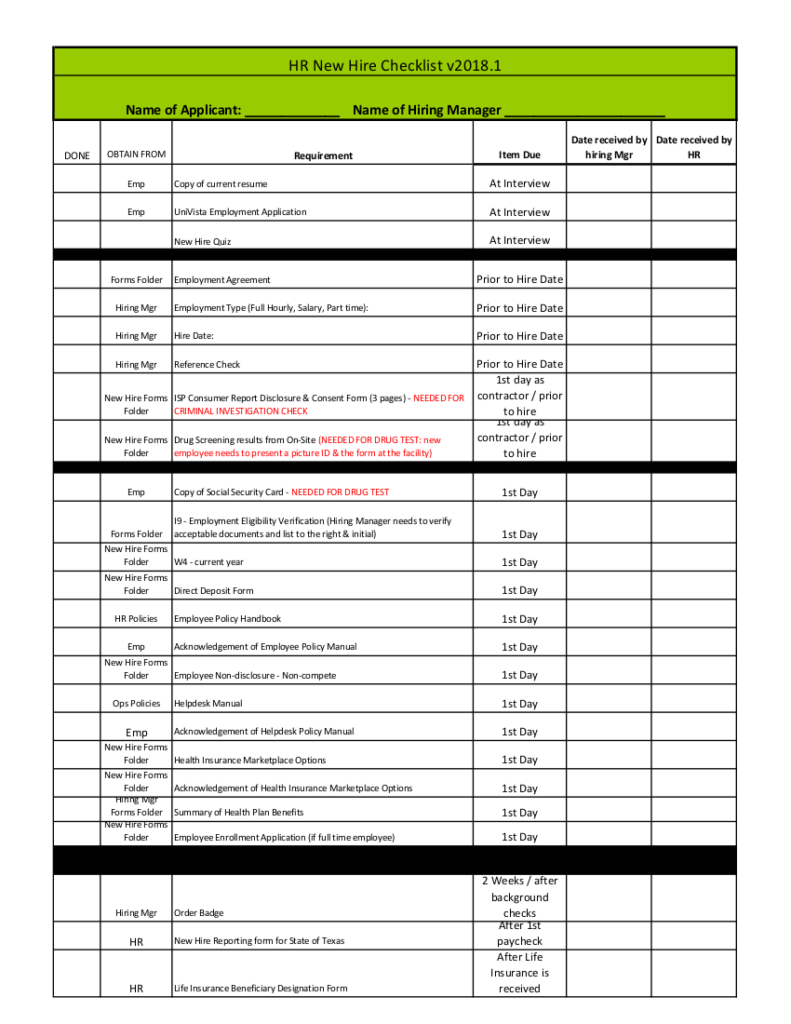

So your company is growing and you need to increase your workforce, but what is the best way to do this smoothly and efficiently? The first thing to do is put together a checklist to ensure your new employee has the best onboarding experience possible. This promotes not only a good impression on the employee, it establishes an impression of organization and investment in the employee’s future.
“New employee onboarding is the process of integrating a new employee with a company and its culture, as well as getting a new hire the tools and information needed to become a productive member of the team,” – SHRM. Onboarding can help increase the likelihood that your new staff member will stick around for a while. This increase in longevity comes down to how much attention and help you give them as they transition into their new position. There are many steps you will need to take over the course of the next few weeks, but what are these steps?
- Security Policy: First, and foremost, you need to make your new employee aware of your Security Policy. This allows them to make your security a part of their daily routine.
- Background Checks: Background checks and drug screenings can take some time to return results, so having these forms ready and available is the first step in starting on the right path.
- New Hire Paperwork:
- Welcome letter
- W-4 form for tax withholding
- Enrollment forms and benefit packages
- I-9 form with instructions
- Emergency notification form
- Employee handbook and form acknowledging they received one
- COBRA form
- BYOD and Acceptable Use Policy
- Learn more here!
- Notify IT Services: A common mistake is inadequate notice of the hire date. Your IT services need a specific lead time to get all accounts provisioned and computers purchased/configured. As soon as you’re aware of their start date, give your IT provider a shout ahead of time so they can schedule that time to assist you with:
- Login Credentials
- Email Address
- Computer Preparation, etc.
- Socialization! It may not seem like an important step, but the average person spends nearly 1/3 of their lives at work. To keep your employee happy and mentally healthy, walk them around and introduce them to the other staff.
- Training: Depending on your company goals, there are several different types of training your new hire may benefit from:
- Software training
- Employee Handbook
- Cybersecurity training
- Review Job Descriptions: This may seem a little unnecessary after going through the whole hiring process, but this is actually a very helpful tool to cover both yours and your new employee’s in the long run. Ensuring something wasn’t missed in the job description or even giving your employee the chance to clarify anything they may have a question on. Verifying your staff’s responsibilities allows you to hold them accountable if they’re not completed. And your employees feel safe knowing what their daily tasks will consist of.
Onboarding a new employee usually comes with a long list of what TO DO, but have you thought of what you shouldn’t do?
- Don’t treat onboarding as a one-day event. This is more common within entry-level position but can happen with others as well. Checking in with your employees will ensure they know you see them as an important part of the team and want them to be there. This helps prevent quick turnaround and solidifies your company as an organization candidates will want to work for.
- Don’t confuse onboarding with orientation. Onboarding can be a lengthy process where orientation is usually a very brief overview of the company itself. Orientation covers items such as, where to put your lunch, where to park, where the bathroom is and more general items such as these.
- Don’t give your new employee too much information in one sitting. Spreading out the training helps your employee retain what they’re learning.
- Don’t forget to check-in!
Like we said before, follow-through is the key to any good onboarding. If you’re throwing a large amount of information at your new staff member, you may want to consider weekly check-ins. These don’t need to be long conversations, just a quick overview. This one-on-one time can also help improve your own process. Asking for feedback will allow you to make changes that you otherwise wouldn’t have thought of:
- How’s the job?
- Was it what you expected?
- Are there any tools you need?
Onboarding can be a lengthy process but doesn’t have to be a difficult one. Mapping out your plan and following it step-by-step increases the likelihood that both you and your new employee will do well. Still questioning whether you’re missing steps on integrating that new staff member? Let us know or check out our attached checklist. Stay tuned for next week’s article on telecommuting and how it can help both you and your staff.
Your UniVista Team
*Celebrating 20 Years of Customer Satisfaction*


